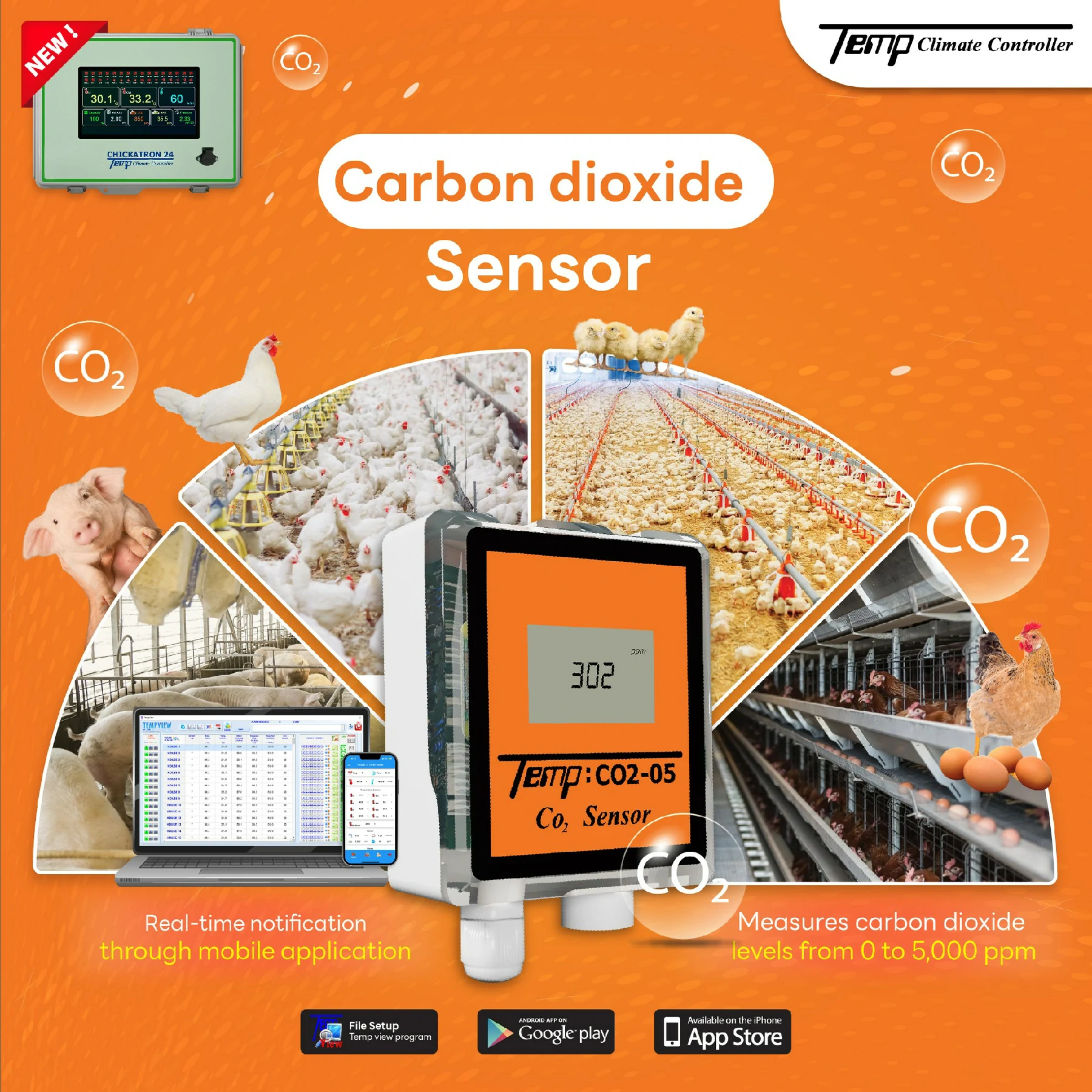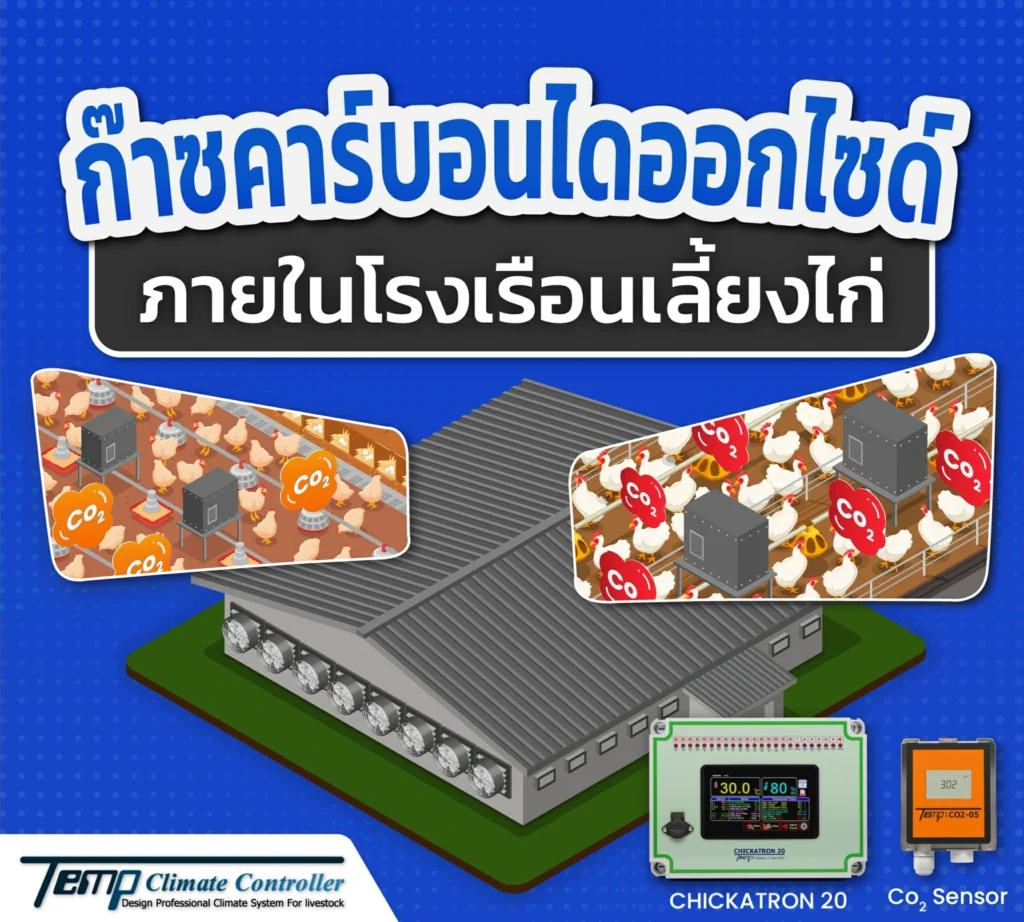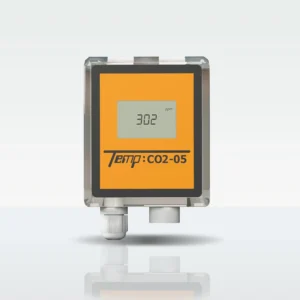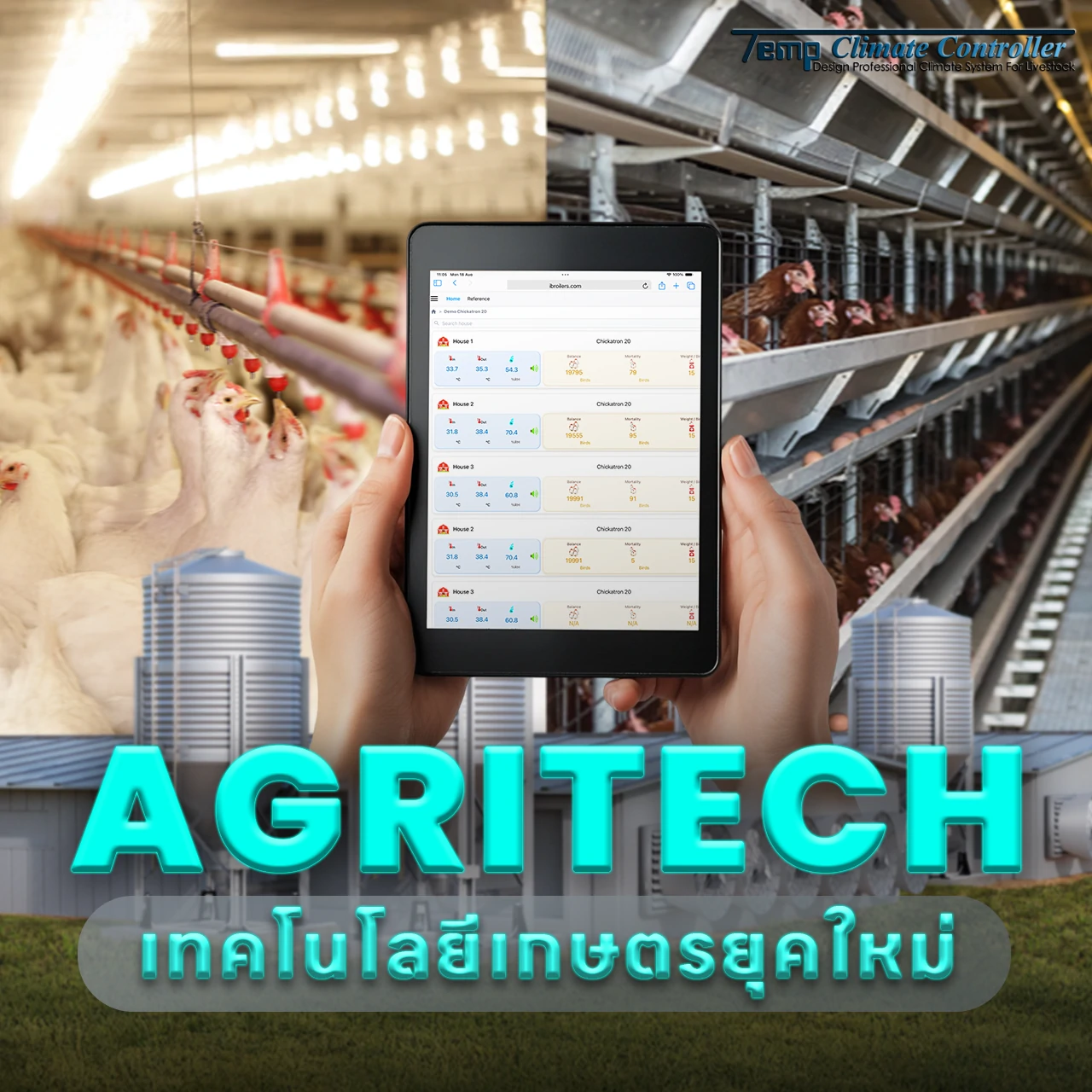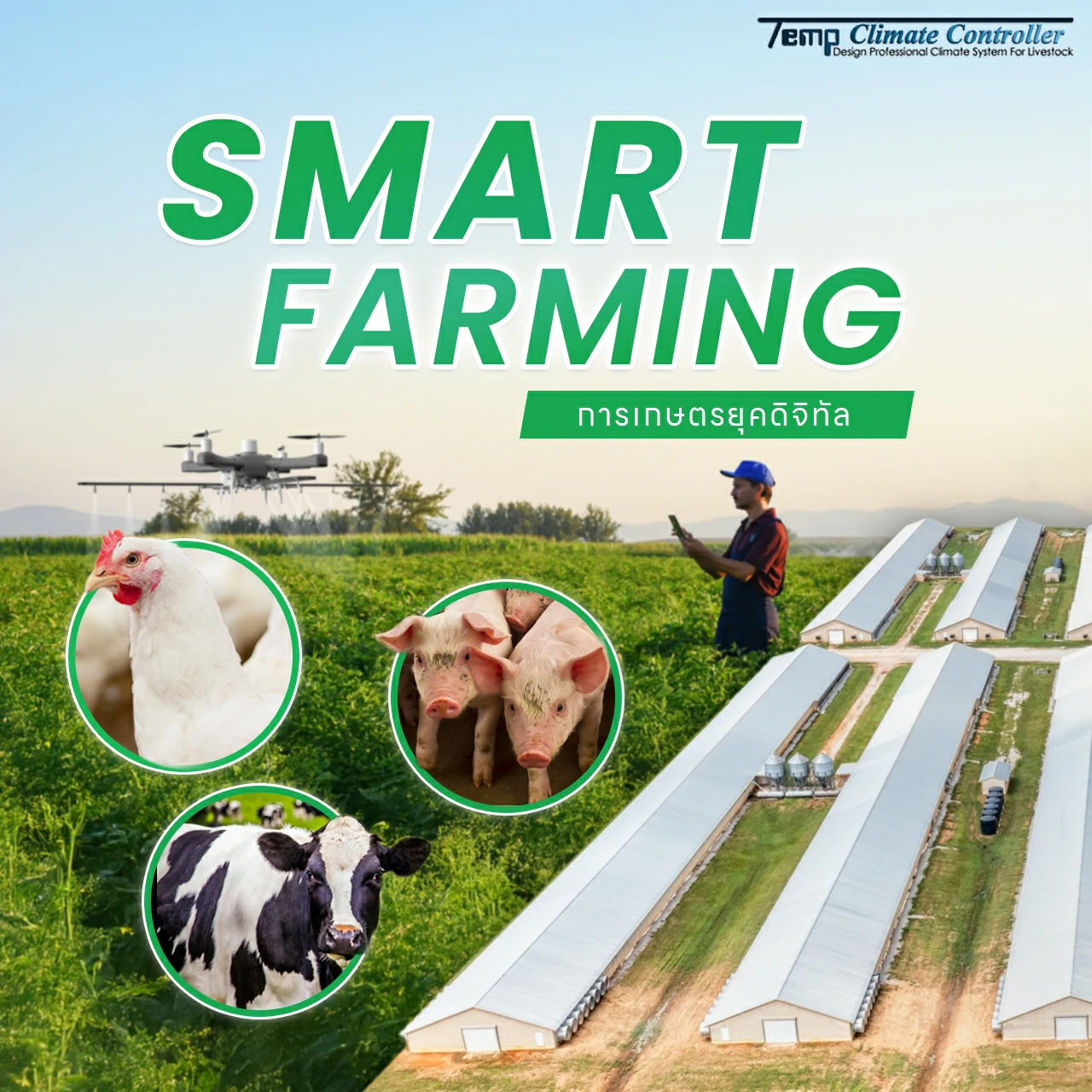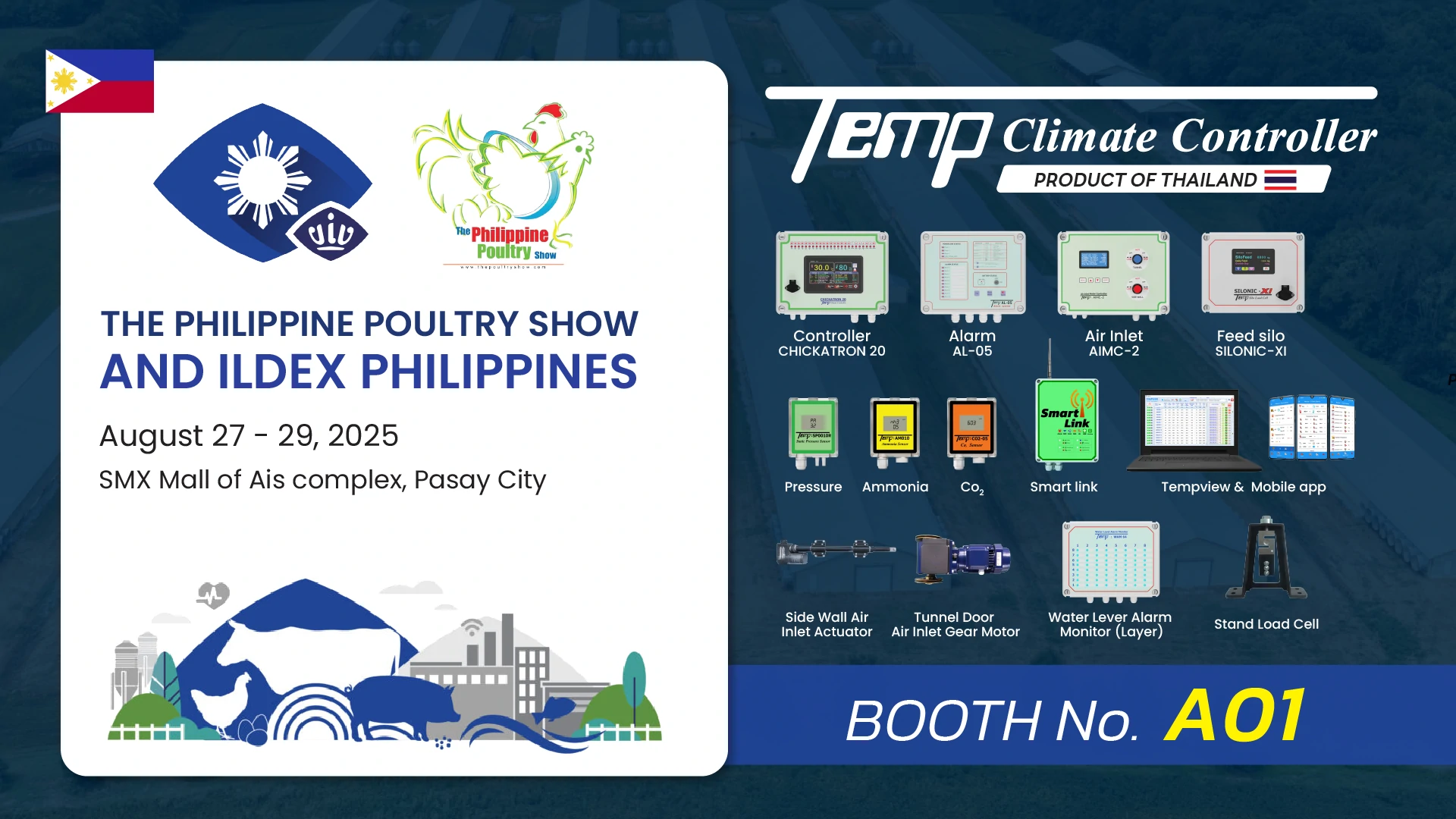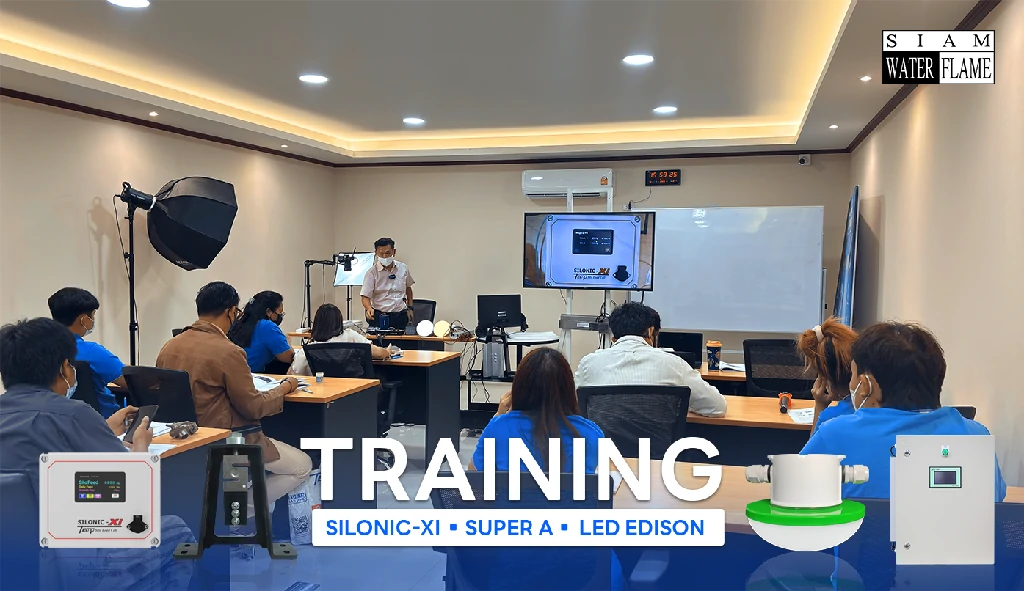Carbon Dioxide (CO₂) Level Management
Proper management of carbon dioxide (CO₂) levels in poultry houses is essential to ensure the health and optimal growth of chickens. Excessive CO₂ levels can cause respiratory difficulties in poultry and reduce the efficiency of egg or meat production. Therefore, appropriate measures should be taken to control CO₂ levels within poultry houses. Recommended management methods include:
1. Effective Ventilation
-
Ventilation Systems: Installing fans or an efficient ventilation system helps to expel CO₂ and bring in fresh air.
-
Airflow Adjustment: Managing the direction and speed of airflow inside the house can help distribute CO₂ evenly and reduce accumulation in specific areas.
2. Air Quality Monitoring and Control
-
CO₂ Sensors: Installing CO₂ sensors allows real-time monitoring of carbon dioxide levels in the poultry house, enabling timely adjustments to the ventilation system as needed.
-
Data Logging: Regular tracking and recording of CO₂ levels help identify trends and make immediate improvements when necessary.

3. House Design and Management
House Design: Design the poultry house with adequate and properly positioned ventilation openings to ensure efficient airflow.
4. Stocking Density Management
Control the number of chickens in the house to maintain an appropriate stocking density, preventing excessive CO₂ accumulation from bird respiration.
5. Use of CO₂-Absorbing Plants
Planting Vegetation: Growing plants around or within the poultry house (where feasible) can help absorb carbon dioxide and improve air quality.
6. Air Filtration Technology
Air Filtration Systems: Using air filtration devices capable of reducing CO₂ levels can further enhance air quality inside the house.
7. Temperature and Humidity Control
7.1 Temperature Control: Maintain appropriate indoor temperatures, as high temperatures may hinder the proper release of CO₂.
7.2 Humidity Management: Keeping optimal humidity levels can reduce CO₂ buildup and make the air fresher inside the house.
Effective carbon dioxide management in poultry houses contributes to better poultry health, improved growth rates, and enhanced long-term farm productivity.
CO₂ Sensor
A sensor designed to measure carbon dioxide levels in poultry houses.
It is ideal for installation in poultry farms to monitor CO₂ gas concentration in the air.
When integrated with the Chickatron20 controller, which features an automatic ventilation control function, the system activates the fans when CO₂ levels exceed preset thresholds. This helps reduce CO₂ concentration promptly before it can negatively impact the chickens’ health.
For more information or advice on CO₂ sensor usage, feel free to contact us.
CO2-SENSOR
• Input Voltage: 12 VDC
• Power Consumption : <10 Watts
• Output Voltage: 0-5 VDC
• Output Impedance: 16 Ohms .
• CO2 Range: 0-5,000 ppm.
• Operating Temperature: -25 to +70°C
• Accuracy: 70 ppm +/-3% of Reading
• Max. Cable Length: 150 Meter
#SensorNH3 #แอมโมเนีย #SENSORAMMONIA #AMMONIASENSOR #เลี้ยงไก่ #SensorCO2 #เซนเซอร์ตรวจคาร์บอนไดออกไซต์ #CO2-SENSOR
Carbon Dioxide (CO₂) Level Management
Proper management of carbon dioxide (CO₂) levels in poultry houses is essential to ensure the health and optimal growth of chickens. Excessive CO₂ levels can cause respiratory difficulties in poultry and reduce the efficiency of egg or meat production. Therefore, appropriate measures should be taken to control CO₂ levels within poultry houses. Recommended management methods include:
1. Effective Ventilation
Ventilation Systems: Installing fans or an efficient ventilation system helps to expel CO₂ and bring in fresh air.
Airflow Adjustment: Managing the direction and speed of airflow inside the house can help distribute CO₂ evenly and reduce accumulation in specific areas.
2. Air Quality Monitoring and Control
CO₂ Sensors: Installing CO₂ sensors allows real-time monitoring of carbon dioxide levels in the poultry house, enabling timely adjustments to the ventilation system as needed.
Data Logging: Regular tracking and recording of CO₂ levels help identify trends and make immediate improvements when necessary.
3. House Design and Management
House Design: Design the poultry house with adequate and properly positioned ventilation openings to ensure efficient airflow.
4. Stocking Density Management
Control the number of chickens in the house to maintain an appropriate stocking density, preventing excessive CO₂ accumulation from bird respiration.
5. Use of CO₂-Absorbing Plants
Planting Vegetation: Growing plants around or within the poultry house (where feasible) can help absorb carbon dioxide and improve air quality.
6. Air Filtration Technology
Air Filtration Systems: Using air filtration devices capable of reducing CO₂ levels can further enhance air quality inside the house.
7. Temperature and Humidity Control
7.1 Temperature Control: Maintain appropriate indoor temperatures, as high temperatures may hinder the proper release of CO₂.
7.2 Humidity Management: Keeping optimal humidity levels can reduce CO₂ buildup and make the air fresher inside the house.
Effective carbon dioxide management in poultry houses contributes to better poultry health, improved growth rates, and enhanced long-term farm productivity.
CO₂ Sensor
A sensor designed to measure carbon dioxide levels in poultry houses.
It is ideal for installation in poultry farms to monitor CO₂ gas concentration in the air.
When integrated with the Chickatron20 controller, which features an automatic ventilation control function, the system activates the fans when CO₂ levels exceed preset thresholds. This helps reduce CO₂ concentration promptly before it can negatively impact the chickens’ health.
For more information or advice on CO₂ sensor usage, feel free to contact us.
CO2-SENSOR
• Input Voltage: 12 VDC
• Power Consumption : <10 Watts
• Output Voltage: 0-5 VDC
• Output Impedance: 16 Ohms .
• CO2 Range: 0-5,000 ppm.
• Operating Temperature: -25 to +70°C
• Accuracy: 70 ppm +/-3% of Reading
• Max. Cable Length: 150 Meter
#SensorNH3 #แอมโมเนีย #SENSORAMMONIA #AMMONIASENSOR #เลี้ยงไก่ #SensorCO2 #เซนเซอร์ตรวจคาร์บอนไดออกไซต์ #CO2-SENSOR
Carbon Dioxide (CO₂) Level Management
Proper management of carbon dioxide (CO₂) levels in poultry houses is essential to ensure the health and optimal growth of chickens. Excessive CO₂ levels can cause respiratory difficulties in poultry and reduce the efficiency of egg or meat production. Therefore, appropriate measures should be taken to control CO₂ levels within poultry houses. Recommended management methods include:
1. Effective Ventilation
Ventilation Systems: Installing fans or an efficient ventilation system helps to expel CO₂ and bring in fresh air.
Airflow Adjustment: Managing the direction and speed of airflow inside the house can help distribute CO₂ evenly and reduce accumulation in specific areas.
2. Air Quality Monitoring and Control
CO₂ Sensors: Installing CO₂ sensors allows real-time monitoring of carbon dioxide levels in the poultry house, enabling timely adjustments to the ventilation system as needed.
Data Logging: Regular tracking and recording of CO₂ levels help identify trends and make immediate improvements when necessary.
3. House Design and Management
House Design: Design the poultry house with adequate and properly positioned ventilation openings to ensure efficient airflow.
4. Stocking Density Management
Control the number of chickens in the house to maintain an appropriate stocking density, preventing excessive CO₂ accumulation from bird respiration.
5. Use of CO₂-Absorbing Plants
Planting Vegetation: Growing plants around or within the poultry house (where feasible) can help absorb carbon dioxide and improve air quality.
6. Air Filtration Technology
Air Filtration Systems: Using air filtration devices capable of reducing CO₂ levels can further enhance air quality inside the house.
7. Temperature and Humidity Control
7.1 Temperature Control: Maintain appropriate indoor temperatures, as high temperatures may hinder the proper release of CO₂.
7.2 Humidity Management: Keeping optimal humidity levels can reduce CO₂ buildup and make the air fresher inside the house.
Effective carbon dioxide management in poultry houses contributes to better poultry health, improved growth rates, and enhanced long-term farm productivity.
CO₂ Sensor
A sensor designed to measure carbon dioxide levels in poultry houses.
It is ideal for installation in poultry farms to monitor CO₂ gas concentration in the air.
When integrated with the Chickatron20 controller, which features an automatic ventilation control function, the system activates the fans when CO₂ levels exceed preset thresholds. This helps reduce CO₂ concentration promptly before it can negatively impact the chickens’ health.
For more information or advice on CO₂ sensor usage, feel free to contact us.
CO2-SENSOR
• Input Voltage: 12 VDC
• Power Consumption : <10 Watts
• Output Voltage: 0-5 VDC
• Output Impedance: 16 Ohms .
• CO2 Range: 0-5,000 ppm.
• Operating Temperature: -25 to +70°C
• Accuracy: 70 ppm +/-3% of Reading
• Max. Cable Length: 150 Meter
#SensorNH3 #แอมโมเนีย #SENSORAMMONIA #AMMONIASENSOR #เลี้ยงไก่ #SensorCO2 #เซนเซอร์ตรวจคาร์บอนไดออกไซต์ #CO2-SENSOR
